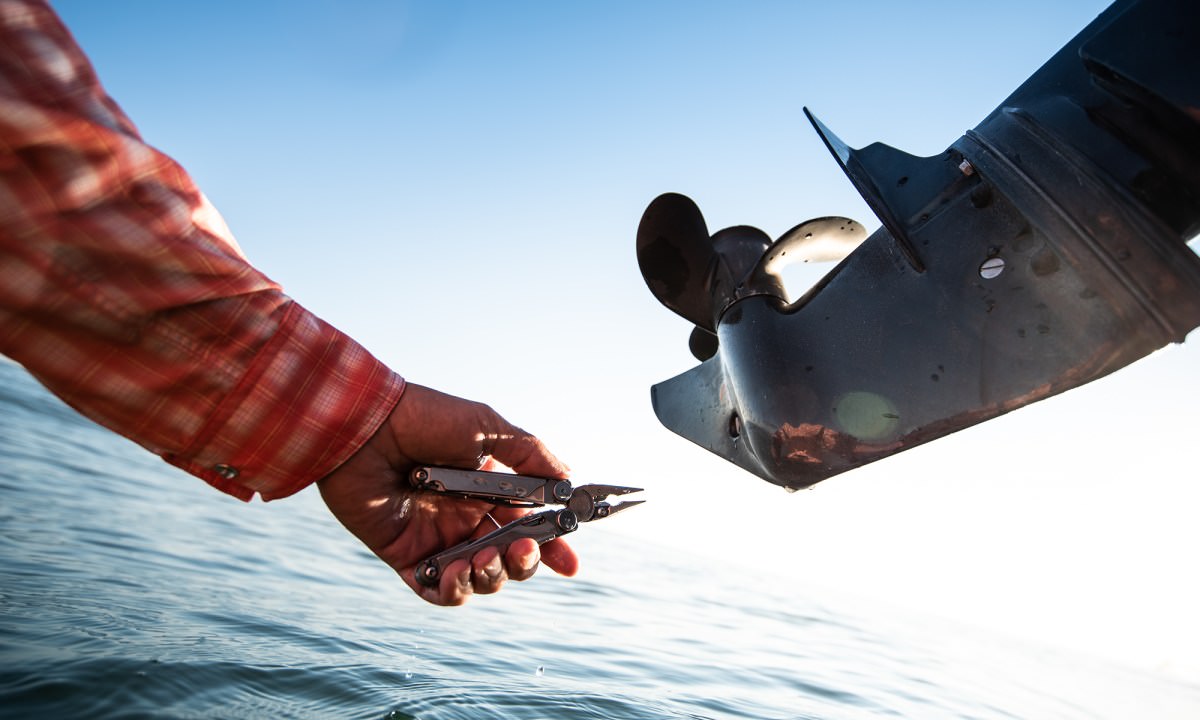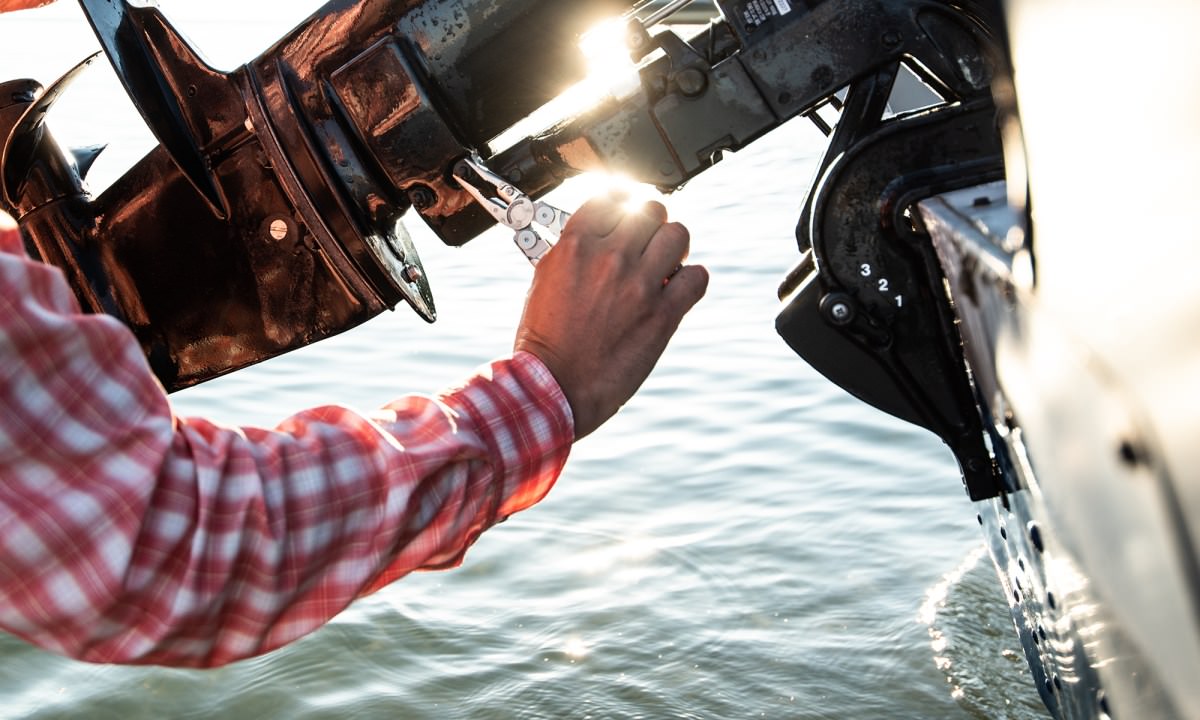Clearing your propeller is never really in the forefront of your mind, but you’ll be glad you know what to do if it does happen.
You typically wait until something is wrong and the prop is clearly jammed before taking measures to remove debris and foreign objects. Keeping this critical piece of your motor clean and functional is critical to the life and performance of your engine. Failing to maintain the prop might leave you stranded on the water with busted motor.
I learned this lesson the hard way while guiding fly fishing trips in Patagonia Chile. Our first outing on Lago Yelcho for the season involved trolling sink tip fly lines with Chilean guests. We used our regular outboards at a low idle as trolling was typically not part of our program. We caught some great fish but one of my anglers had a bad habit of swinging his line towards the running propeller. While netting a fish for the other angler, he managed to catch the prop and make a mess before I was able to cut the engine.
Luckily I had both my knife and Leatherman as the job required pulling the line with pliers while cutting to remove the line. No way was it coming off whole. I cut away what I thought was the entire line before we returned to fishing. The motor made it through the day but eventually lost propulsion. A couple of wraps of line worked between the shaft and housing where they bound around the shaft and burnt out the entire lower unit. If I didn’t have oars, we would still be drifting around the lake.
Steps to Clear a Propeller
The next time you catch line, weeds, or anything substantial on the prop take the following steps to clear everything and return to a functional operating state.
- Cut power to the motor immediately.
- Disconnect electric motors from the battery to prevent accidental starting while you clean the prop.
- Lift the motor until the prop is clear of the water and in a stable position.
- Use a Leatherman to pull and cut away debris until the propeller and lower unit appear clean.
- Safely exit the boat on shore to inspect the gap between the motor housing and shaft. Use a flashlight if necessary to locate additional debris.
- In extreme cases, remove the housing to inspect and clean the entire shaft and lower unit.

